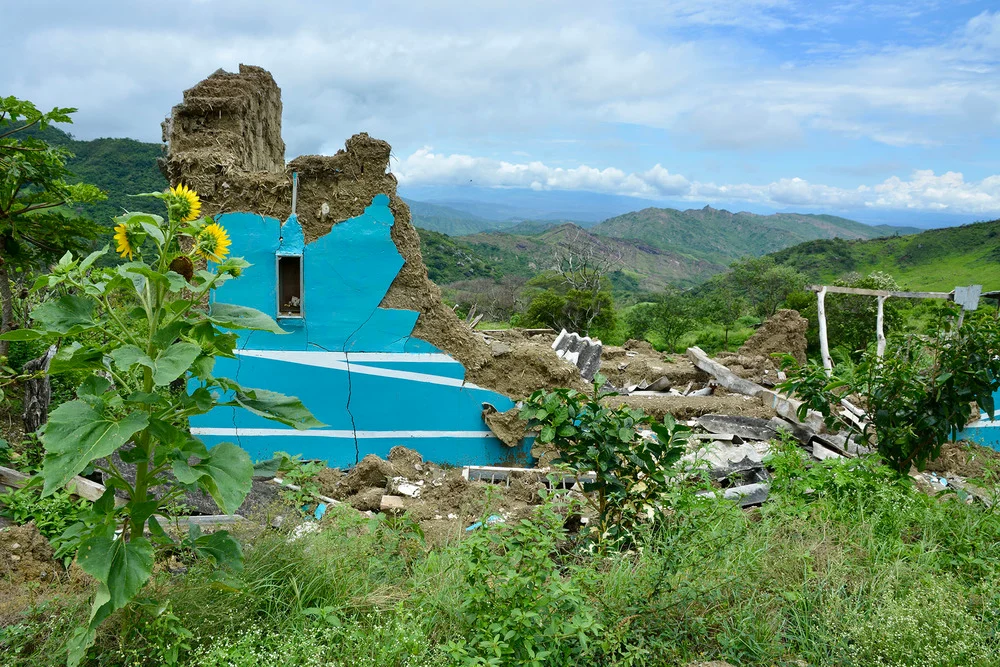
Every year for the past two decades, an estimated 350 to 500 medium-to-large disasters have taken place globally; numbers only expected to rise further due to the climate crisis. But many, like the case studies we report on here in Peru and Nepal, receive little attention beyond the areas directly affected. As a result, the response can fall far short of what’s needed.
Disasters that fly under the radar because their casualty counts aren’t so high often also happen in the same places year in year out, causing huge long-term problems. And the fact that they struggle for aid funding and holistic relief strategies only exacerbates future disasters by forcing survivors to remain in – or return to – the same unsafe locations.
“On the local level, communities are destroyed, residents lose their livelihoods, poverty increases and they are in a vicious cycle year after year; because every year, it’s the same,” explained Melissa Allemant, humanitarian response lead at Save the Children in Peru.
A recent report from the UN Office for Disaster Risk Reduction (UNDRR) predicted that disasters will rise to roughly 560 per year by 2030.
“Disasters have now become a leading cause of forced migration and displacement globally,” António Vittorino, director-general of the UN’s migration agency, IOM, told a recent risk reduction forum in Bali.
Although natural disasters, disease outbreaks, chemical accidents and climate events can hit anywhere, they disproportionately impact the poorest. In the last decade, low- and middle-income economies lost, on average, roughly one percent of their GDPs, compared to only 0.1 to 0.2 per cent for higher-income countries.
The UN predicts that climate change impacts will push an additional 37.6 million to 100.7 million people into poverty by 2030, depending on global warming scenarios. Our first case study of disaster neglect looks at a series of related events in Peru’s northern Amazonas region.
An estimated 13,000 people in a region known as the ceja de selva or “jungle’s eyebrow” – due to its mountainous terrain above forested flatlands – found themselves facing aid shortages in the months after a 7.5-magnitude earthquake in late November 2021.
Initially, the quake, which killed two people, gained widespread national media attention. Peru’s embattled president, Pedro Castillo, visited and promised residents would be airlifted to safer locations. Lima’s newspapers covered the main events as they unfolded. But even as one disaster then spawned several more, attention began to wane.
In December, intense seasonal rains provoked landslides in areas deforested for agriculture and weakened by the seismic activity. A flooded river washed away an ad hoc camp set up on its bank for earthquake survivors from another nearby community, killing one.
In the months since, at least eight more villages in the region have been destroyed by landslides and flooding. This includes, in early March, the village of Guayacán, where 90 hectares of land collapsed onto it from the hills above. Residents lost everything: their homes, their livelihoods, access to clean water, even their school.
Despite the growing difficulties, media coverage of the disaster area has dried up. As a political storm engulfed Castillo, the Amazonas crisis became largely forgotten outside the region. Assistance has all but disappeared. Some 2,000 people have now been living in tents for more than six months. And in the absence of more liveable temporary housing, many families have returned to their homes and their land, in spite of the risk of more landslides.
Many people in the ceja de selva migrate from the Andes in search of better economic prospects. The communities they create reflect these roots architecturally, with wooden Andean balconies otherwise atypical in this jungle area.
Settlers cut forests to plant banana trees and coffee, as well as genetically modified corn – replacing deep-rooted vegetation with new species that don’t retain the soil as well, facilitating erosion.
During a trip to the region in late April, The New Humanitarian spoke to survivors in four communities affected by the string of disasters. All said the promised government assistance was taking longer than expected to arrive.
Like many others, *María Nancy said she was still in shock and disbelief at what happened on 11 December when the hillside on which her village of San Isidro is perched began sliding downward.
“I had my house only for two years,” said the 49-year-old widow and mother-of-three, wiping tears from her face. “It was a dream to have this home.”
- The New Humanitarian report











